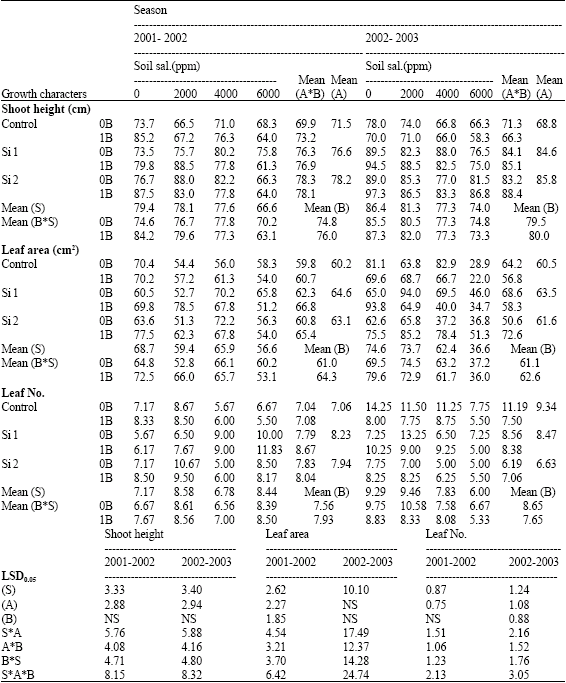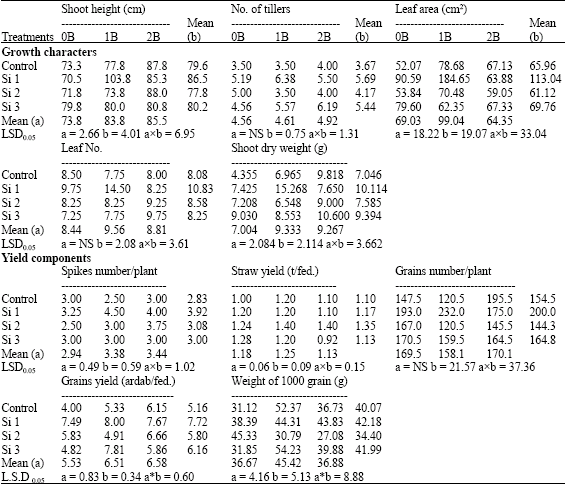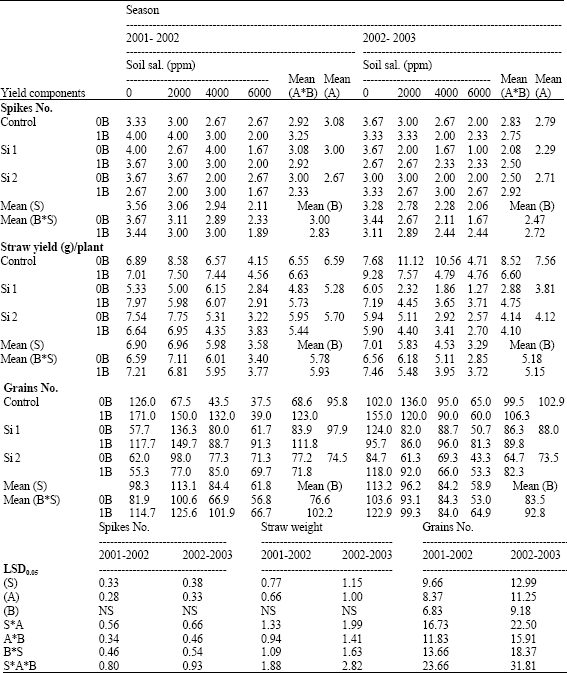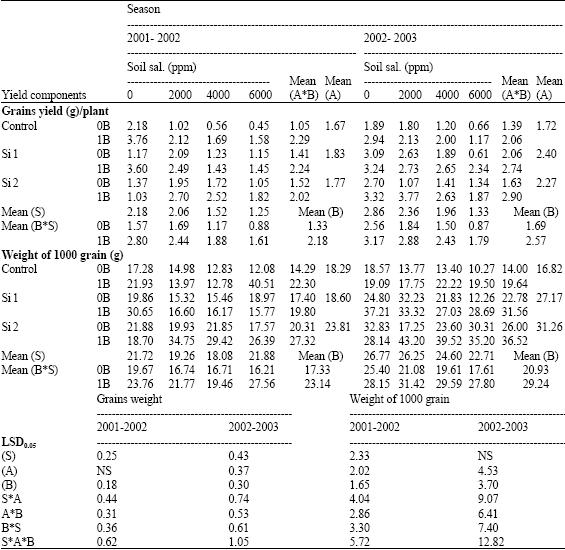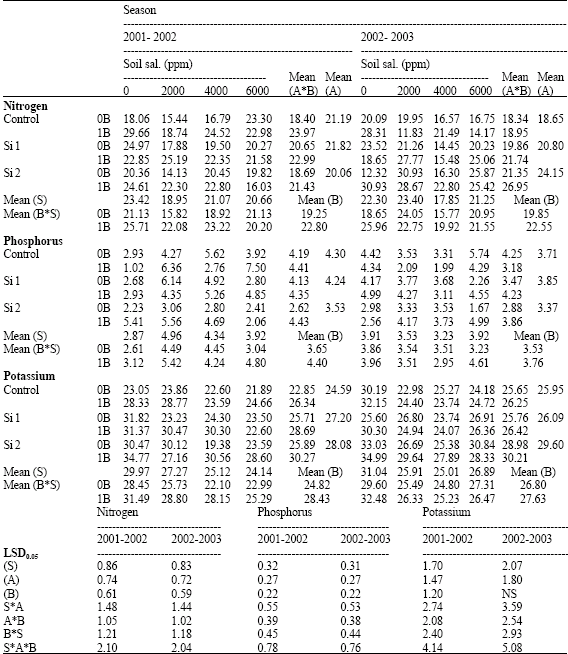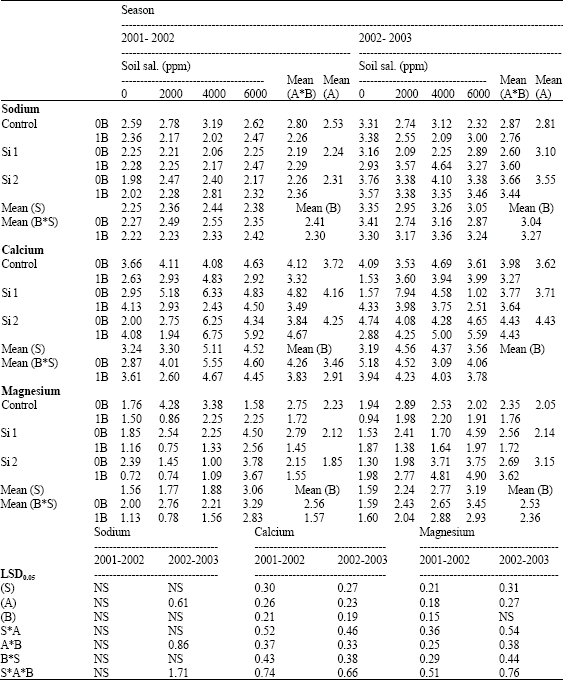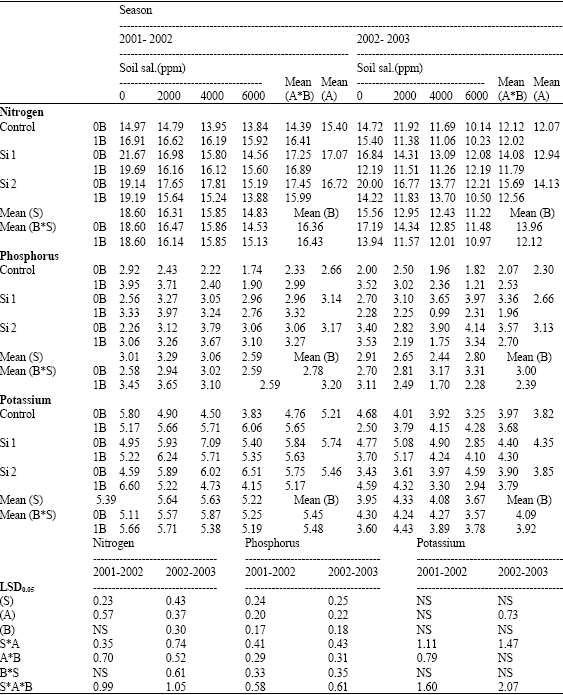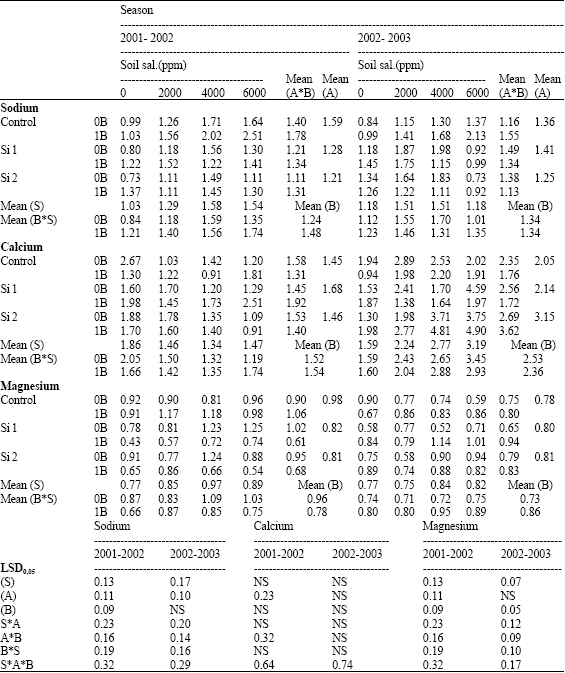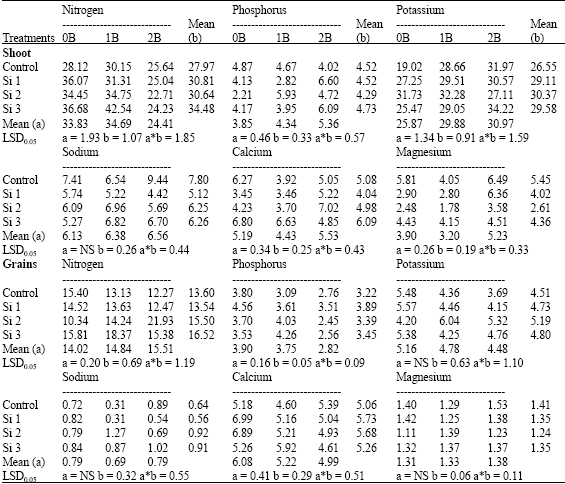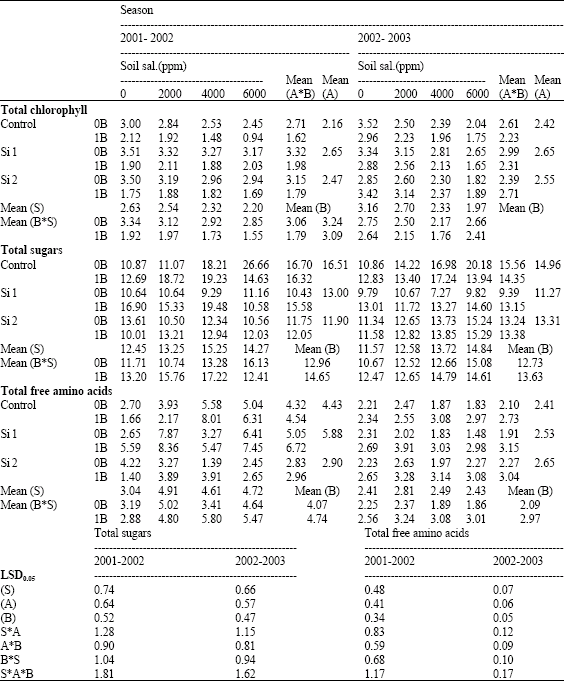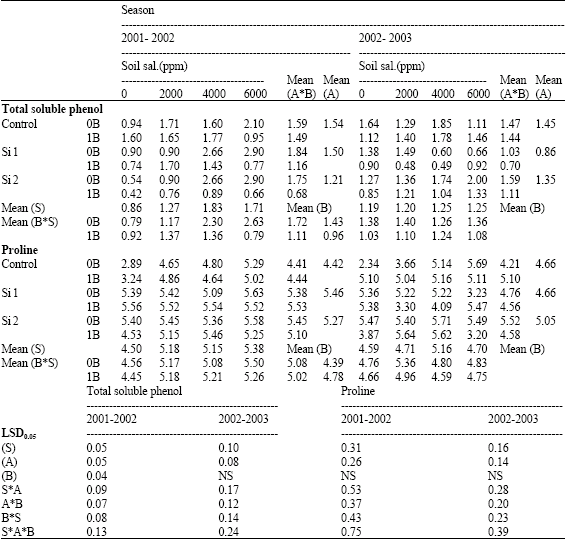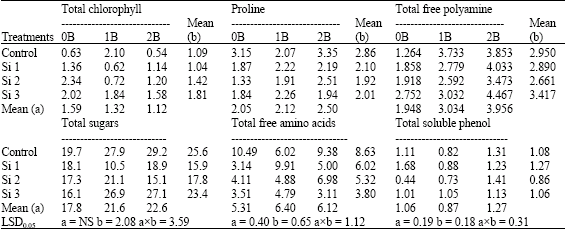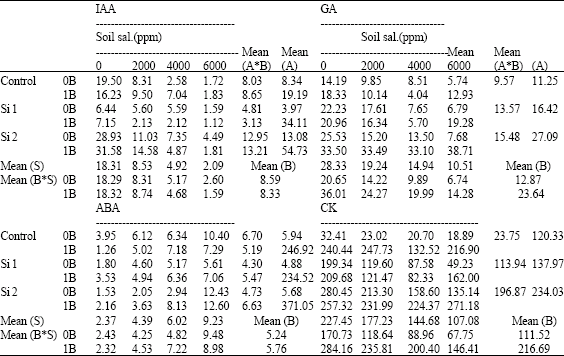Research Article
Effect of Silicon and Boron Foliar Applications on Wheat Plants Grown under Saline Soil Conditions
Plant Physiology Section, Plant Botany Department, Faculty of Agriculture, Cairo University, Egypt
E.M. Harb
Plant Physiology Section, Plant Botany Department, Faculty of Agriculture, Cairo University, Egypt
M.A. Higazy
Plant Physiology Section, Plant Botany Department, Faculty of Agriculture, Cairo University, Egypt
Sh.H. Morgan
Plant Physiology Section, Plant Botany Department, Faculty of Agriculture, Cairo University, Egypt










